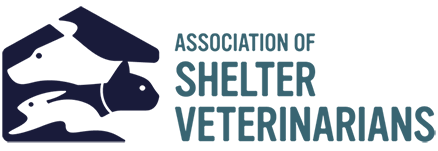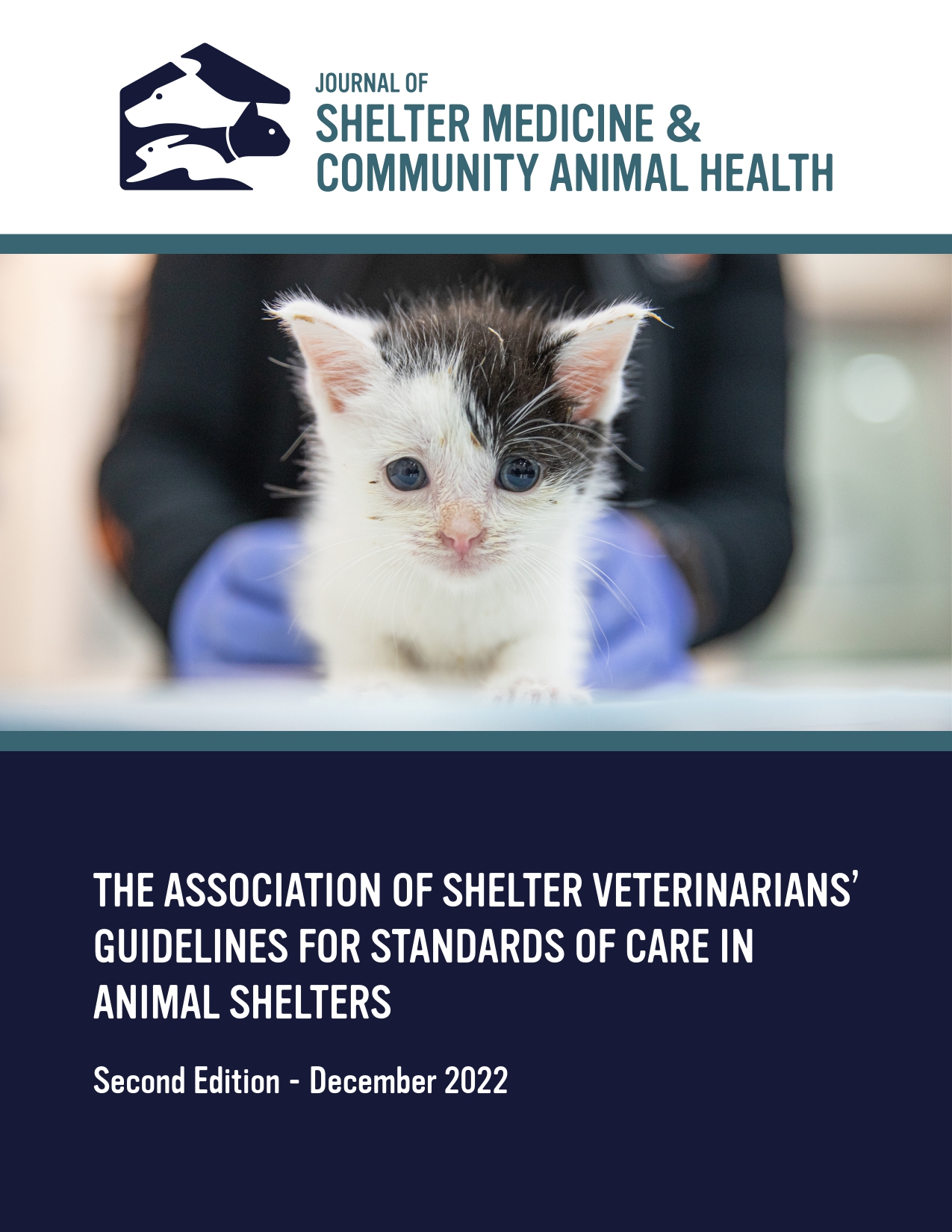2025 Q1 Review
Last year, we tried generating AI summaries of these to make it easier for you to decide where to dive in deep. We asked for feedback, and we heard you - largely silent on the topic (with light, scattered applause) which we take to mean you liked it! So for your convenience, here is an AI generated summary of what we learned in Q1 of this year at JSMCAH (and for our audio listeners, here's our perfunctory, slightly uncanny AI generated podcast).
----------
The sources this quarter cover a diverse range of topics pertinent to animal sheltering and community animal health, including a successful intervention to reduce canine parvovirus (CPV) incidence through deferred puppy intake, the impact of warming methods on feline core body temperature during anesthesia, insights into leadership dynamics within animal welfare organizations, a critical examination of the concept of a "responsible pet owner" in the context of sterilization, challenges and considerations regarding access to veterinary care and the use of psychoactive medications in shelters, the influence of kennel viewing on dog adoptions, the effectiveness of a long-standing Trap-Neuter-Return (TNR) program for community cats, and the correlation between adverse childhood experiences (ACEs) and professional quality of life issues in animal shelter workers.
Key takeaways include the significant impact of operational changes on disease rates, the potential for improved patient outcomes through simple interventions like active warming during surgery, the complex interplay of leadership roles and attitudes within organizations, the need for more equitable and less judgmental approaches to pet ownership and veterinary procedures, the importance of addressing financial barriers and developing low-cost treatment options for increased access to care, the potential for increased visibility to positively impact adoptions of long-stay animals, the long-term effectiveness of TNR in managing community cat populations, and the critical link between the well-being of animal shelter workers and their past experiences.
Key Themes and Findings
1. Disease Prevention and Intervention:
Deferred Puppy Intake and CPV Reduction: A study examining the effects of a deferred puppy intake protocol at a partner shelter saw a dramatic decrease in Canine Parvovirus (CPV) incidence. Following the implementation of this protocol, where community members were encouraged to keep unwanted or stray puppies until transport day, the incidence of CPV in transferred puppies decreased from 47% to 9% (P <0.001).
Quote: "After implementation of the deferred intake protocol, CPV incidence in puppies transferred from this partner shelter decreased from 47% (18/38) to 9% (9/103); (P <0.001)."
Puppies diagnosed with CPV after transport had significantly higher survival rates (100%) compared to those diagnosed prior to transport (33%) (P <0.001).
Stray puppies were significantly more likely to develop CPV infections than owner-surrendered puppies (P <0.001), and puppies housed in the partner shelter's Puppy room were 13 times more likely to develop CPV infections.
Quote: "Puppies with a history of being housed in the partner’s Puppy room were 13 times more likely to develop CPV infections than puppies who had no history of being housed in the Puppy room [20/40; 50% vs. 7/10; 7% (P<0.0001; OR= 13.4, CI=5.01-36.02)]."
The deferred intake protocol likely benefited stray puppies the most by reducing their time in the partner shelter's housing.
Identifying Novel Pathogens in Feline Ocular Disease: Molecular methods (Next-Generation Sequencing - NGS) were used to identify potential pathogens in feline eyes enucleated due to severe Upper Respiratory Tract Disease (URTD)-associated ocular disease.
Quote: "Burkholderia, an organism that has not been previously associated with severe ocular disease in cats with URTD, was found in high relative abundance in all the enucleated eyes."
While common URTD pathogens like Feline Herpesvirus (FHV-1) and Feline Calicivirus (FCV) were found in some samples, Burkholderia was the dominant genus across all enucleated eyes, often at very high relative abundance. This highlights the potential of NGS to identify bacterial pathogens that may not be detected by traditional culture methods.
Control samples from conjunctival swabs and oral cavities showed generally low levels of Burkholderia, while some internal organ tissues from a hoarding case had high levels, suggesting potential systemic involvement in some cases.
2. Veterinary Care Access and Economics
Services Declined Due to Price: Identifying veterinary services most often declined due to price is crucial for developing low-cost treatment options and increasing access to care.
Research suggests that non-specialized and outpatient treatments for conditions like pyometra have shown effectiveness, expanding evidence-informed, lower-cost options.
Quote: "To identify the services that are most often declined due to price, researchers could collaborate with local veterinary clinics to track those services that are declined and why."
This information can also inform where preventative medicine and alternative financing mechanisms for services are needed, acknowledging that declined services may vary regionally.
Defining the "Responsible Pet Owner" and Sterilization: A critical perspective is offered on the definition of a "responsible pet owner" (RPO) as sometimes presented in veterinary guidelines, particularly in relation to sterilization procedures.
Quote: "Ideally, an RPO can afford expensive specialty surgery (hysterectomy or vasectomy) or has the financial and physical resources to manage the reproductive capacity of their pet and engages in regular health screening activities and veterinary visits..."
The source objects to the implication that gonadectomy is a substandard procedure for those who cannot meet these potentially high standards of care, arguing that this approach can be value-laden and judgmental.
Food Banks as a Temporary Solution for Food Insecurity: Pet food banks can provide temporary financial relief for families struggling to care for their animals, potentially preventing surrender due to inability to afford food.
Quote: "Food banks are a way for families facing temporary financial difficulties in caring for their animals. It should not be a permanent or long-term solution, but it should prevent the decision to give up the animals due to the inability to feed them."
Food banks receive donations from various sources and distribute them to vulnerable guardians and shelters. While present in many cities globally, studies on these initiatives in Brazil are noted as lacking.
3. Animal Welfare Interventions and Outcomes
Impact of Warming on Feline Anesthesia: A study on female cats undergoing ovariohysterectomy found that both active warming (insulation with heating element) and passive insulation (insulation only) significantly reduced the rate of core body temperature decrease during anesthesia compared to a control group.
Quote: "After two hours, the lowest recorded temperatures were predicted to be 1.2 °F and 1.9 °F, higher in the passive and active groups, respectively (both P = 0.001)."
Active warming resulted in a slower rate of temperature decline and higher lowest recorded temperatures, highlighting the importance of thermal support during surgery for cats.
Kennel Viewing and Dog Adoptions: A retrospective study found that allowing potential adopters to view dogs in their kennels throughout the day (midday and afternoon) in 2024 correlated with significantly higher odds of afternoon adoptions compared to previous years with more restricted viewing policies (P < 0.05).
Quote: "The 2024 high afternoon odds differ significantly from 2023, 2022, and 2019..."
While this study highlights a potential benefit of increased visibility, further randomized studies are needed to explore the effects of more subtle factors and to specifically address the visibility of "slow-track" dogs (those with longer lengths of stay).
Trap-Neuter-Return (TNR) and Return-to-Field (RTF) for Community Cats: A study on Florida animal shelters revealed varying rates of TNR and RTF participation based on shelter type, region, and admissions numbers.
Quote: "Rural counties were significantly less likely than urban counties to perform TNR or RTF."
The proportion of shelters performing TNR or RTF significantly increased with higher cat admission numbers.
The minimum age for TNR (2 months) and RTF (3 months, aligning with rabies vaccine age) is discussed, along with the ongoing debate about the best approach for kittens found outdoors, balancing the risks of shelter life against the high mortality rates in free-roaming kittens. The importance of individualized decision-making based on the kitten's condition, situation, and available resources is emphasized.
Use of Psychoactive Medications and Non-Medication Alternatives in Shelters: A survey of shelter personnel explored the frequency, comfort, and efficacy of psychoactive medications and non-medication alternatives for fearful cats and dogs.
Gabapentin and Fluoxetine were the most frequently administered psychoactive medications for cats, while Trazodone and Gabapentin were most common for dogs.
Quote: "Mean and standard deviation (SD) of comfort and efficacy ratings (1–5) were calculated from Likert scale responses, with comfort ranging from ‘Very Uncomfortable’ (1) to ‘Very Comfortable’ (5) and efficacy from ‘Never Effective’ (1) to ‘Always Effective’ (5)."
Several barriers to psychoactive medication use were identified, including lack of time, cost, and objections from leadership, with these barriers being less pronounced in private shelters compared to municipal shelters. Dependency fear was a lower barrier in high-intake shelters.
Those involved in prescribing medications rated ease of administration as a higher consideration but also expressed greater concern about medications interfering with learning.
4. Organizational Dynamics and Staff Well-being
Leadership Dynamics and Attitudes: A study exploring attitudes toward veterinarian-leader relationship effectiveness found significant differences among organizational roles.
Quote: "The results indicated that there was a statistically significant difference (F(2, 175) = 16.1, P < 0.001) between at least two of the three groups (non-veterinarian leaders, veterinarian leaders, and veterinarian non-leaders)."
Non-veterinarian leaders reported the highest mean score for this effectiveness, followed by veterinarian leaders, and then veterinarian non-leaders, who reported the lowest score.
Quote: "A larger difference was observed between the non-veterinarian leader group (M = 4.0, SD = 0.6) and the veterinarian non-leader group (M = 3.1, SD = 0.9). This difference was statistically significant (P < 0.001) with a large effect size (Cohen d = 1.1)."
These findings suggest potential areas for improving communication and collaboration within animal welfare organizations.
Adverse Childhood Experiences (ACEs) and Animal Shelter Worker Well-being: A study found a significant correlation between Adverse Childhood Experiences (ACEs) scores and measures of secondary traumatic stress (STSS) and professional quality of life (PQoL) issues (burnout and trauma) in animal shelter workers (ASWs).
Quote: "Over 50% of the ASWs had an ACEs score of 4 or greater, with a mean of 4 (SD 2.7) and mode of 5 (n=24)."
Quote: "ACEs were significantly correlated with STSS scores, both for the total (r = 0.4, P < 0.001) and on the subscales of intrusion (r = 0.3, P = 0.001), avoidance (r = 0.4, P < 0.001), and arousal (r = 0.4, P < 0.001)."
Higher ACEs scores were associated with decreased use of friends and family for emotional co-regulation. These findings highlight the vulnerability of ASWs to the emotional demands of their work and the potential impact of their past experiences on their current well-being.
5. Research Methodology and Data Analysis
Several studies utilized statistical software and programming languages such as Python with libraries like NumPy, SciPy, pandas, FactorAnalyzer, statsmodels, Pingouin, Matplotlib, and seaborn for data analysis and visualization. RStudio was also used for statistical analyses, including ordinal logistic regression and Benjamini-Hochberg correction for multiple comparisons.
Different statistical tests were employed depending on the data type and research question, including Pearson chi-squared tests, Fisher’s exact tests, Mann–Whitney U tests, Wilcoxon rank-sum tests, and one-way ANOVA.
Molecular methods, specifically Next-Generation Sequencing (NGS), were utilized to identify bacterial pathogens, providing a more comprehensive view of the microbial population in samples compared to traditional culture methods.
Implications:
These findings have several important implications for animal shelters, veterinary professionals, and policymakers:
Disease Prevention: Simple operational changes, such as deferred intake for puppies, can significantly impact infectious disease rates and improve survival outcomes. Targeted interventions based on known risk factors (e.g., source of intake, housing environment) are crucial. Utilizing advanced diagnostic methods like NGS can improve the identification and management of infectious diseases.
Access to Care: Addressing the financial barriers to veterinary care is essential. Research into developing and validating low-cost treatment alternatives and exploring alternative financing models are critical steps. A more equitable and less judgmental approach to defining responsible pet ownership is needed, moving away from solely focusing on the ability to afford high-cost interventions.
Animal Welfare: Implementing interventions like thermal support during surgery can directly improve patient outcomes. Optimizing kennel viewing policies and increasing the visibility of animals with longer lengths of stay may improve adoption rates. Decision-making regarding community cats, particularly kittens, should be nuanced and consider the individual animal's needs and the resources available.
Organizational Health: Understanding and addressing the dynamics between different leadership roles within animal welfare organizations is important for improving collaboration and effectiveness. Recognizing the significant impact of ACEs on the well-being of animal shelter workers is crucial, and organizations should implement support systems to mitigate secondary traumatic stress and burnout.
This briefing document provides a snapshot of the diverse and important research being conducted in the field of shelter medicine and community animal health. Further research building on these findings is needed to continue improving the lives of animals and the people who care for them.
Call for Submissions
Discover the Journal of Shelter Medicine and Community Animal Health (JSMCAH), an independent and high-quality online open access journal published by the Association of Shelter Veterinarians (ASV).
We seek original research, community case studies, and review articles covering a broad range of topics in Shelter Medicine, such as animal health, behavior, welfare, companion animal epidemiology, shelter population management, access to care programs, public health, and veterinary forensics. In 2023, publishing your work with us is completely FREE, thanks to the generous sponsors of ASV.
Join our mission to promote and disseminate shelter medicine knowledge and to advance community animal health. Visit jsmcah.org for more information.
A Note on Future Announcements
We plan to publish these announcements approximately once a quarter. Please give us feedback! Do you like AI summaries? Hate them? Do you want more frequent updates on specific papers or sets of papers? Contact kevin.horecka@gmail.com with your feedback!





